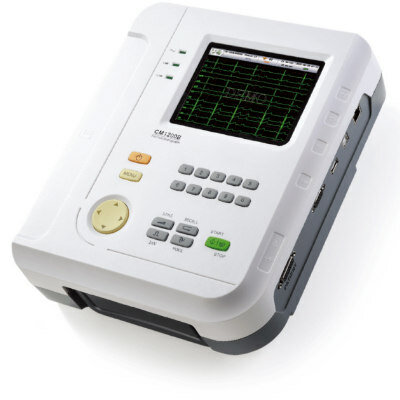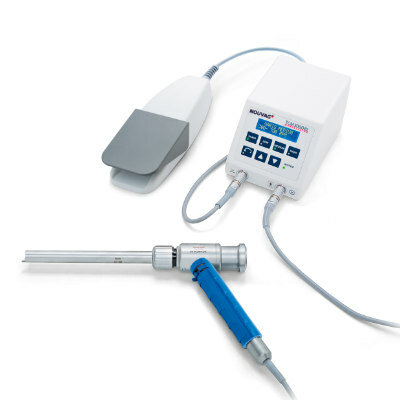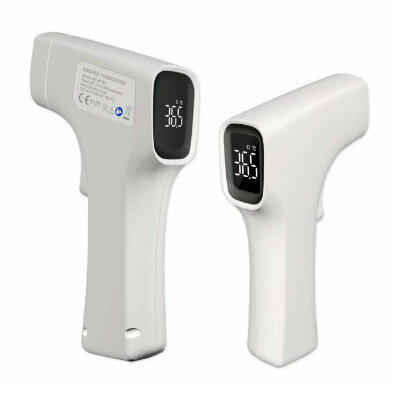Inhalable Nanobody-Based Treatment Administered at Ultra-Low Doses Could Prevent and Treat SARS-CoV-2 Infections
|
By HospiMedica International staff writers Posted on 27 May 2021 |

Image: A new study published in Science Advances found that inhalable nanobodies targeting the spike protein of the SARS-CoV-2 coronavirus can prevent and treat severe COVID-19 in hamsters. Here, bronchioles of hamsters sick with COVID-19 untreated (left) and treated with inhalable nanobodies (right) show the impact of the approach (Photo courtesy of Nambulli et al., Science Advances)
A new study has found that inhalable nanobodies targeting the spike protein of the SARS-CoV-2 coronavirus can prevent and treat severe COVID-19 in hamsters.
Scientists from the University of Pittsburgh School of Medicine (Pittsburgh, PA, USA) have shown that inhalable nanobodies targeting the spike protein of the SARS-CoV-2 coronavirus can prevent and treat severe COVID-19 in hamsters. This is the first time the nanobodies - which are similar to monoclonal antibodies but smaller in size, more stable and cheaper to produce - were tested for inhalation treatment against coronavirus infections in a pre-clinical model. The scientists showed that low doses of an aerosolized nanobody named Pittsburgh inhalable Nanobody-21 (PiN-21) protected hamsters from the dramatic weight loss typically associated with severe SARS-CoV-2 infection and reduced the number of infectious virus particles in the animals’ nasal cavities, throats and lungs by a million-fold, compared to placebo treatment with a nanobody that doesn’t neutralize the virus.
Previously, the scientists had discovered a large repertoire of more than 8,000 high-affinity SARS-CoV-2 nanobodies. From this repertoire, the scientists selected an ultrapotent nanobody (Nb21) and bioengineered it into a trimeric form to further maximize its antiviral activity. The resulting PiN-21 is by far the most potent antiviral nanobody that has been identified, according to the researchers’ review of published studies. The experiments showed that PiN-21 was protective when administered intranasally at the time of infection. Hamsters in the PiN-21 treatment group did not lose any body weight, unlike the placebo-treated animals who lost up to 16% of their initial body weight after a week of infection. For the average adult human, the rate of the weight loss would correspond to shedding roughly 20 pounds in a week. Even more impressively, inhalation of aerosolized nanobodies at an ultra-low dose reduced the number of infectious virus particles in the lung tissue by six-fold. Animals who received aerosolized PiN-21 nanobodies had milder changes in the lung structure and a lower degree of inflammation than those who received the placebo.
To deliver therapeutics via aerosolization, the scientists had to overcome several technical challenges - small particle aerosols have to reach deep into the lung - and treatment particles need to be small enough so that they don’t clump together but also strong enough to withstand the extreme pressure required to suspend them in the air. PiN-21 nanobodies, which are approximately four times smaller than typical monoclonal antibodies with exceptionally high stability, are perfectly suited for the task. They also are much cheaper to produce and can be generated rapidly to swiftly adapt to the shape-shifting virus. Researchers point out that the nanobodies and vaccines are complementary and do not compete with one another. Vaccines remain the best tool to stop the virus from spreading from person to person, but nanobodies will be useful to treat people who already are sick and those who can’t get vaccinated for other medical reasons. Promising early preclinical data, combined with the researchers’ extensive knowledge about rapidly identifying drug-quality nanobodies, suggest that this approach can provide a convenient and cost-effective therapeutic option to control the coronavirus pandemic.
“By using an inhalation therapy that can be directly administered to the infection site—the respiratory tract and lungs—we can make treatments more efficient,” said co-senior author Yi Shi, assistant professor of cell biology at Pitt. “We are very excited and encouraged by our data suggesting that PiN-21 can be highly protective against severe disease and can potentially prevent human-to-human viral transmission.”
“COVID-19 is now a preeminent disease of the 21st century,” said coauthor Doug Reed, associate professor of immunology at Pitt. “Delivering the treatment directly to the lungs can make a big difference for our ability to treat it.”
Related Links:
University of Pittsburgh School of Medicine
Scientists from the University of Pittsburgh School of Medicine (Pittsburgh, PA, USA) have shown that inhalable nanobodies targeting the spike protein of the SARS-CoV-2 coronavirus can prevent and treat severe COVID-19 in hamsters. This is the first time the nanobodies - which are similar to monoclonal antibodies but smaller in size, more stable and cheaper to produce - were tested for inhalation treatment against coronavirus infections in a pre-clinical model. The scientists showed that low doses of an aerosolized nanobody named Pittsburgh inhalable Nanobody-21 (PiN-21) protected hamsters from the dramatic weight loss typically associated with severe SARS-CoV-2 infection and reduced the number of infectious virus particles in the animals’ nasal cavities, throats and lungs by a million-fold, compared to placebo treatment with a nanobody that doesn’t neutralize the virus.
Previously, the scientists had discovered a large repertoire of more than 8,000 high-affinity SARS-CoV-2 nanobodies. From this repertoire, the scientists selected an ultrapotent nanobody (Nb21) and bioengineered it into a trimeric form to further maximize its antiviral activity. The resulting PiN-21 is by far the most potent antiviral nanobody that has been identified, according to the researchers’ review of published studies. The experiments showed that PiN-21 was protective when administered intranasally at the time of infection. Hamsters in the PiN-21 treatment group did not lose any body weight, unlike the placebo-treated animals who lost up to 16% of their initial body weight after a week of infection. For the average adult human, the rate of the weight loss would correspond to shedding roughly 20 pounds in a week. Even more impressively, inhalation of aerosolized nanobodies at an ultra-low dose reduced the number of infectious virus particles in the lung tissue by six-fold. Animals who received aerosolized PiN-21 nanobodies had milder changes in the lung structure and a lower degree of inflammation than those who received the placebo.
To deliver therapeutics via aerosolization, the scientists had to overcome several technical challenges - small particle aerosols have to reach deep into the lung - and treatment particles need to be small enough so that they don’t clump together but also strong enough to withstand the extreme pressure required to suspend them in the air. PiN-21 nanobodies, which are approximately four times smaller than typical monoclonal antibodies with exceptionally high stability, are perfectly suited for the task. They also are much cheaper to produce and can be generated rapidly to swiftly adapt to the shape-shifting virus. Researchers point out that the nanobodies and vaccines are complementary and do not compete with one another. Vaccines remain the best tool to stop the virus from spreading from person to person, but nanobodies will be useful to treat people who already are sick and those who can’t get vaccinated for other medical reasons. Promising early preclinical data, combined with the researchers’ extensive knowledge about rapidly identifying drug-quality nanobodies, suggest that this approach can provide a convenient and cost-effective therapeutic option to control the coronavirus pandemic.
“By using an inhalation therapy that can be directly administered to the infection site—the respiratory tract and lungs—we can make treatments more efficient,” said co-senior author Yi Shi, assistant professor of cell biology at Pitt. “We are very excited and encouraged by our data suggesting that PiN-21 can be highly protective against severe disease and can potentially prevent human-to-human viral transmission.”
“COVID-19 is now a preeminent disease of the 21st century,” said coauthor Doug Reed, associate professor of immunology at Pitt. “Delivering the treatment directly to the lungs can make a big difference for our ability to treat it.”
Related Links:
University of Pittsburgh School of Medicine
Latest COVID-19 News
- Low-Cost System Detects SARS-CoV-2 Virus in Hospital Air Using High-Tech Bubbles
- World's First Inhalable COVID-19 Vaccine Approved in China
- COVID-19 Vaccine Patch Fights SARS-CoV-2 Variants Better than Needles
- Blood Viscosity Testing Can Predict Risk of Death in Hospitalized COVID-19 Patients
- ‘Covid Computer’ Uses AI to Detect COVID-19 from Chest CT Scans
- MRI Lung-Imaging Technique Shows Cause of Long-COVID Symptoms
- Chest CT Scans of COVID-19 Patients Could Help Distinguish Between SARS-CoV-2 Variants
- Specialized MRI Detects Lung Abnormalities in Non-Hospitalized Long COVID Patients
- AI Algorithm Identifies Hospitalized Patients at Highest Risk of Dying From COVID-19
- Sweat Sensor Detects Key Biomarkers That Provide Early Warning of COVID-19 and Flu
- Study Assesses Impact of COVID-19 on Ventilation/Perfusion Scintigraphy
- CT Imaging Study Finds Vaccination Reduces Risk of COVID-19 Associated Pulmonary Embolism
- Third Day in Hospital a ‘Tipping Point’ in Severity of COVID-19 Pneumonia
- Longer Interval Between COVID-19 Vaccines Generates Up to Nine Times as Many Antibodies
- AI Model for Monitoring COVID-19 Predicts Mortality Within First 30 Days of Admission
- AI Predicts COVID Prognosis at Near-Expert Level Based Off CT Scans
Channels
Artificial Intelligence
view channel
AI-Powered Algorithm to Revolutionize Detection of Atrial Fibrillation
Atrial fibrillation (AFib), a condition characterized by an irregular and often rapid heart rate, is linked to increased risks of stroke and heart failure. This is because the irregular heartbeat in AFib... Read more
AI Diagnostic Tool Accurately Detects Valvular Disorders Often Missed by Doctors
Doctors generally use stethoscopes to listen for the characteristic lub-dub sounds made by heart valves opening and closing. They also listen for less prominent sounds that indicate problems with these valves.... Read moreCritical Care
view channel
Deep-Learning Model Predicts Arrhythmia 30 Minutes before Onset
Atrial fibrillation, the most common type of cardiac arrhythmia worldwide, affected approximately 59 million people in 2019. Characterized by an irregular and often rapid heart rate, atrial fibrillation... Read more
Breakthrough Technology Combines Detection and Treatment of Nerve-Related Disorders in Single Procedure
The peripheral nervous system (PNS) serves as the communication network that links the brain and spinal cord to every other part of the body. It consists of two parts: the somatic nervous system, which... Read moreSurgical Techniques
view channel
Hydrogel-Based Miniaturized Electric Generators to Power Biomedical Devices
The development of engineered devices that can harvest and convert the mechanical motion of the human body into electricity is essential for powering bioelectronic devices. This mechanoelectrical energy... Read moreWearable Technology Monitors and Analyzes Surgeons' Posture during Long Surgical Procedures
The physical strain associated with the static postures maintained by neurosurgeons during long operations can lead to fatigue and musculoskeletal problems. An objective assessment of surgical ergonomics... Read more.jpg)
Custom 3D-Printed Orthopedic Implants Transform Joint Replacement Surgery
The evolving field of 3D printing is revolutionizing orthopedics, especially for individuals requiring joint replacement surgeries where traditional implants fail to provide a solution. Although most people... Read more
Cutting-Edge Imaging Platform Detects Residual Breast Cancer Missed During Lumpectomy Surgery
Breast cancer is becoming increasingly common, with statistics indicating that 1 in 8 women will develop the disease in their lifetime. Lumpectomy remains the predominant surgical intervention for treating... Read morePatient Care
view channel
Surgical Capacity Optimization Solution Helps Hospitals Boost OR Utilization
An innovative solution has the capability to transform surgical capacity utilization by targeting the root cause of surgical block time inefficiencies. Fujitsu Limited’s (Tokyo, Japan) Surgical Capacity... Read more
Game-Changing Innovation in Surgical Instrument Sterilization Significantly Improves OR Throughput
A groundbreaking innovation enables hospitals to significantly improve instrument processing time and throughput in operating rooms (ORs) and sterile processing departments. Turbett Surgical, Inc.... Read more
Next Gen ICU Bed to Help Address Complex Critical Care Needs
As the critical care environment becomes increasingly demanding and complex due to evolving hospital needs, there is a pressing requirement for innovations that can facilitate patient recovery.... Read moreGroundbreaking AI-Powered UV-C Disinfection Technology Redefines Infection Control Landscape
Healthcare-associated infection (HCAI) is a widespread complication in healthcare management, posing a significant health risk due to its potential to increase patient morbidity and mortality, prolong... Read moreHealth IT
view channel
Machine Learning Model Improves Mortality Risk Prediction for Cardiac Surgery Patients
Machine learning algorithms have been deployed to create predictive models in various medical fields, with some demonstrating improved outcomes compared to their standard-of-care counterparts.... Read more
Strategic Collaboration to Develop and Integrate Generative AI into Healthcare
Top industry experts have underscored the immediate requirement for healthcare systems and hospitals to respond to severe cost and margin pressures. Close to half of U.S. hospitals ended 2022 in the red... Read more
AI-Enabled Operating Rooms Solution Helps Hospitals Maximize Utilization and Unlock Capacity
For healthcare organizations, optimizing operating room (OR) utilization during prime time hours is a complex challenge. Surgeons and clinics face difficulties in finding available slots for booking cases,... Read more
AI Predicts Pancreatic Cancer Three Years before Diagnosis from Patients’ Medical Records
Screening for common cancers like breast, cervix, and prostate cancer relies on relatively simple and highly effective techniques, such as mammograms, Pap smears, and blood tests. These methods have revolutionized... Read morePoint of Care
view channel
Critical Bleeding Management System to Help Hospitals Further Standardize Viscoelastic Testing
Surgical procedures are often accompanied by significant blood loss and the subsequent high likelihood of the need for allogeneic blood transfusions. These transfusions, while critical, are linked to various... Read more
Point of Care HIV Test Enables Early Infection Diagnosis for Infants
Early diagnosis and initiation of treatment are crucial for the survival of infants infected with HIV (human immunodeficiency virus). Without treatment, approximately 50% of infants who acquire HIV during... Read more
Whole Blood Rapid Test Aids Assessment of Concussion at Patient's Bedside
In the United States annually, approximately five million individuals seek emergency department care for traumatic brain injuries (TBIs), yet over half of those suspecting a concussion may never get it checked.... Read more
New Generation Glucose Hospital Meter System Ensures Accurate, Interference-Free and Safe Use
A new generation glucose hospital meter system now comes with several features that make hospital glucose testing easier and more secure while continuing to offer accuracy, freedom from interference, and... Read moreBusiness
view channel
Johnson & Johnson Acquires Cardiovascular Medical Device Company Shockwave Medical
Johnson & Johnson (New Brunswick, N.J., USA) and Shockwave Medical (Santa Clara, CA, USA) have entered into a definitive agreement under which Johnson & Johnson will acquire all of Shockwave’s... Read more

















